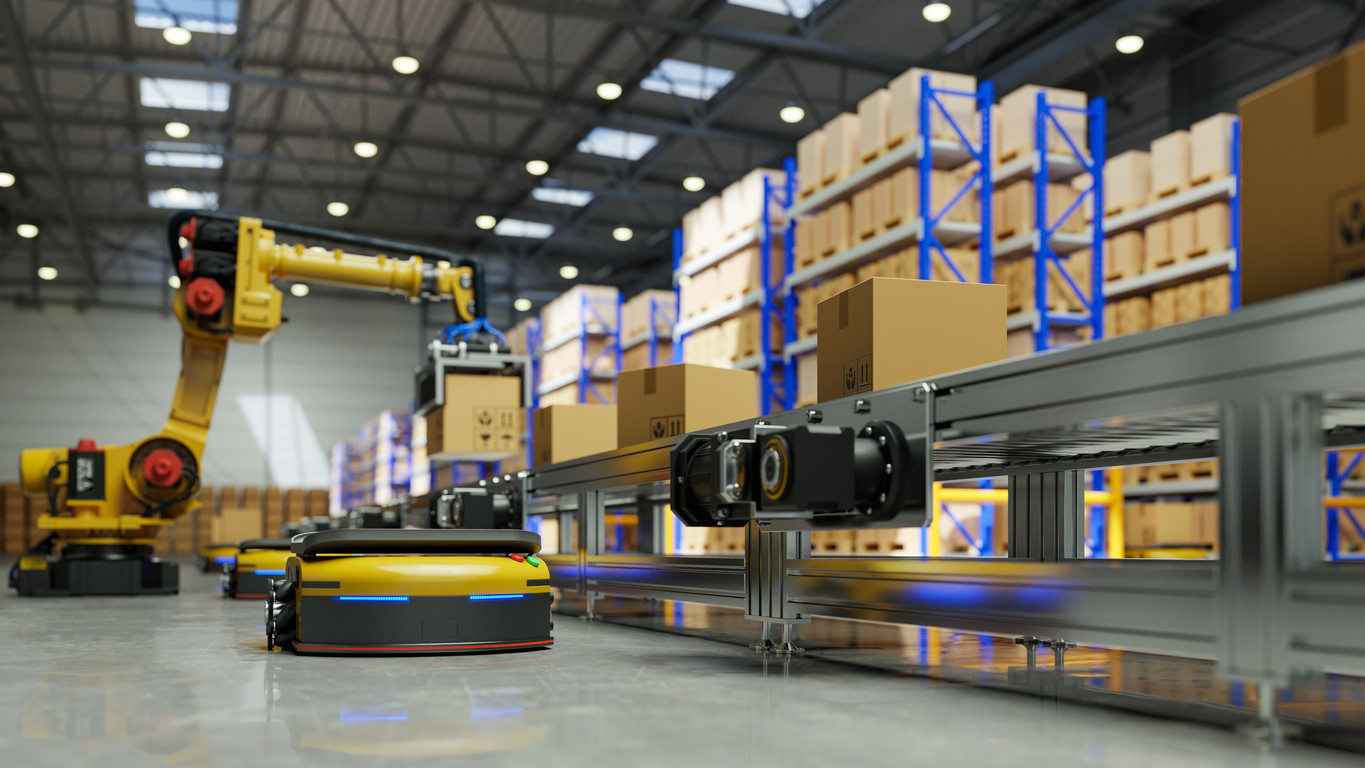How Electronics are Transforming the Warehousing Industry
07-05-2024 | By Jack Pollard
We are living in an age where the title of this article could just as easily be 50 or 100 warehousing industry trends. Technologies like AI and the IoT when paired with shifting market trends are setting the scene for one of the most disruptive eras of a generation.
For electronics design engineers and buyers, these changes are not just background noise; they are critical factors reshaping the landscape of inventory management, operational efficiency, and how we cope with events that could create supply chain disruptions, such as Chinese New Year.
Choosing only five trends is a challenge. However, for the electronics industry, the five trends that made the list all represent significant opportunities for innovation, efficiency gains, and competitive advantage in a fluid marketplace.
1. Automation and Robotics in Warehousing
The increasing integration of robotics and automation in warehousing operations is setting new benchmarks in accuracy and efficiency. For the electronics industry, this trend is both beneficial in supply chain terms, and also in terms of the increasing demand for the electronic components and systems at the heart of this trend.
Among the factors driving this trend are:
- Enhanced precision and speed: Robotics equipped with advanced sensors and AI algorithms, many of which are developed and supplied by the electronics sector, are setting new standards for picking and placing operations.
- Cost reduction over time: Although the initial investment might be significant, the long-term savings on labour and the reduction in errors contribute to a compelling ROI, with electronic components playing a key role in the durability and functionality of these systems.
- Scalability and flexibility: Modern robotic systems offer the adaptability needed to handle varying inventory types and volumes, thanks to the modular electronics that power them.
Accompanied by a growing demand for components and warehousing operational enhancements, this trend represents a big win-win for the industry.

2. Internet of Things (IoT) Integration
The integration of the Internet of Things (IoT) into warehousing operations is revolutionising how inventory is managed and operations are monitored.
At the core of this trend lies a vast array of electronic components and systems, from sensors to communication modules, which are essential for IoT devices to function. This trend not only enhances operational efficiency but also opens up new avenues for electronics manufacturers to innovate and meet the growing demand for IoT solutions in warehousing.
- Real-time inventory tracking: IoT devices enable precise monitoring of inventory levels and locations. The electronics industry plays a crucial role in developing the sensors and RFID tags that make this possible.
- Predictive maintenance: By integrating IoT sensors into warehouse equipment, facilities can predict and prevent equipment failures before they disrupt operations.
- Energy management: IoT technology helps warehouses reduce energy consumption and costs by monitoring and controlling lighting, heating, and cooling systems.
Again, there is a symbiotic relationship between the industry supplying the innovations that drive this trend and reaping the direct benefits of the integration of the tech into warehousing operations.
3. Advanced Data Analytics for Operational Efficiency
Data analytics has been a critical factor in streamlining warehouse operations for some time. What is changing is the amount of data available and the processing power to fully analyse it.
The integration of IoT, cloud computing, and AI, not only requires sophisticated electronic systems – again good news for the industry – it also enables more efficient warehousing operations and reduced costs within the warehousing sector:
- Demand forecasting: Electronic data processing systems enhance the accuracy of demand predictions, enabling more efficient inventory management.
- Operational insights: Analytics provide valuable insights into operational bottlenecks, guiding improvements in process efficiency.
- Customised solutions: Electronics manufacturers are at the forefront, offering tailored analytics solutions that cater to specific warehousing needs.
This trend not only highlights the electronics industry's role in enabling smarter warehousing but also its potential for growth in developing analytics-driven solutions.
4. Improved Overall Equipment Effectiveness (OEE)
Overall equipment effectiveness is a critical benchmark for measuring the effectiveness and productivity of warehouse equipment. Achieving OEE improvement has always been challenging, but again it is advanced electronics that are driving the improved monitoring and data collection that are complete game changers in OEE.
Factors influencing increases in OEE include:
- Automated data collection: The adoption of electronic systems for gathering performance data streamlines OEE calculations, ensuring accuracy and reliability.
- Real-time monitoring: Leveraging IoT technologies facilitates continuous equipment performance monitoring, pinpointing areas for improvement.
- Enhanced productivity: Electronic advancements in monitoring and data analysis tools directly contribute to improved operational productivity and efficiency in warehousing.
Advanced software and electronics are helping warehousing operations set new standards in maximising the efficiency and productivity of warehouse plants and machinery.
5. 5G Technology and Enhanced Connectivity
The deployment of 5G technology is set to revolutionise warehousing operations by offering unprecedented connectivity speeds and reliability. This leap in wireless communication technology is particularly significant for the electronics industry, as it paves the way for more advanced IoT applications, real-time data processing, and seamless automation processes.
- Faster data transmission: The high-speed connectivity provided by 5G is crucial for real-time inventory tracking and management, enabling instant communication between devices.
- Enhanced IoT functionality: With its ability to support a vast number of connected devices simultaneously, 5G technology enhances the functionality of IoT devices used in warehousing, supported by the electronics that facilitate rapid data processing.
- Improved operational efficiency: The real-time data access and analysis enabled by 5G improve decision-making processes and operational responsiveness, leading to more efficient warehousing operations.
The introduction of 5G technology into warehousing highlights the indispensable role of electronic components and systems in driving forward these advancements.
How Advanced Electronics are Transforming Warehousing
At the heart of each of these trends lies advanced electronics, driving efficiencies and opening new possibilities in warehousing. Both in terms of improving supplies and generating new business opportunities, the changing face of warehousing has a direct impact on all industries as they continually adapt to shifting market demands. Central to this is the electronics industry, which is in a prime position to be a major beneficiary of the most disruptive periods for decades.

